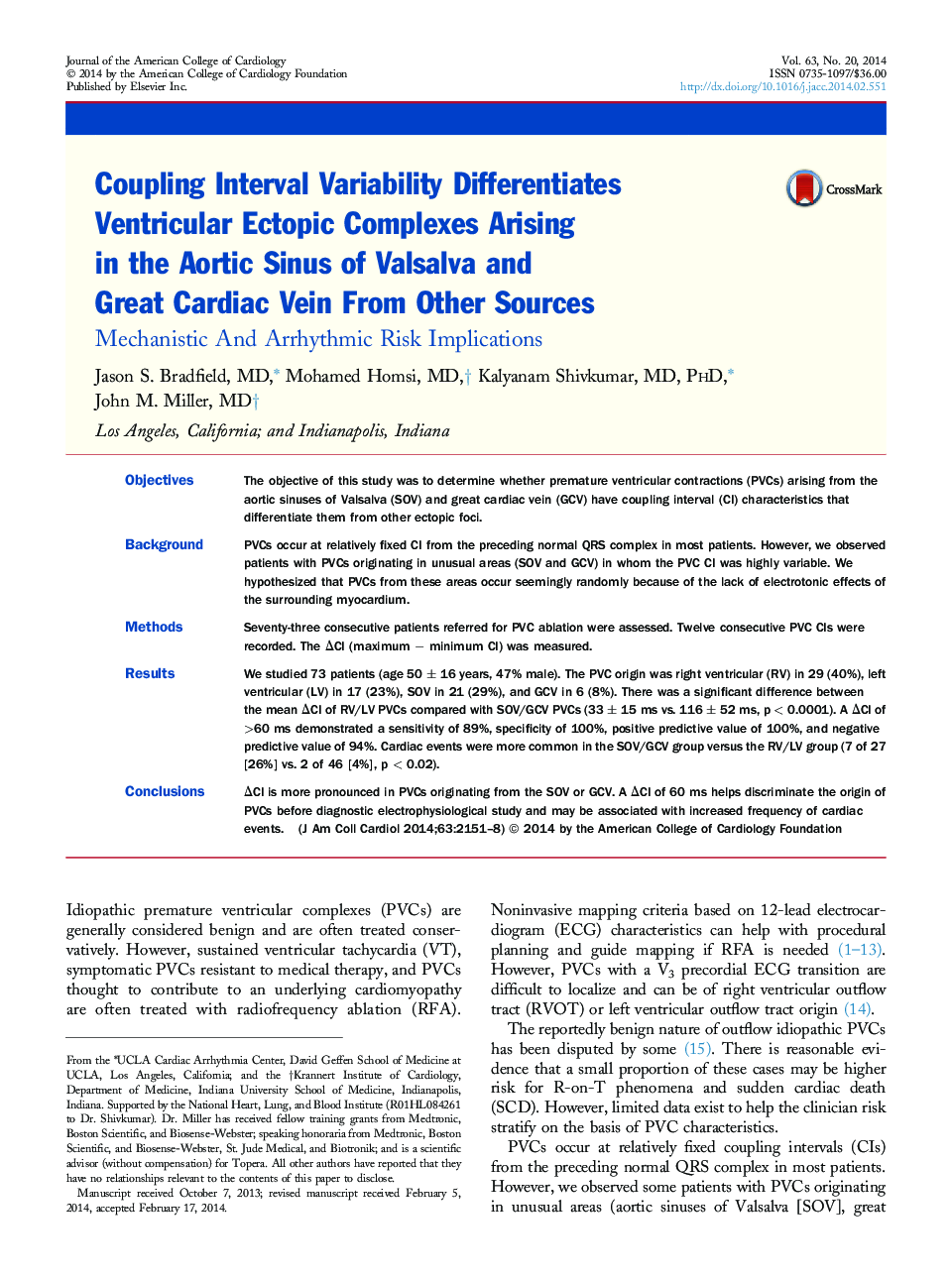| کد مقاله | کد نشریه | سال انتشار | مقاله انگلیسی | نسخه تمام متن |
|---|---|---|---|---|
| 5983124 | 1577102 | 2014 | 8 صفحه PDF | دانلود رایگان |
ObjectivesThe objective of this study was to determine whether premature ventricular contractions (PVCs) arising from the aortic sinuses of Valsalva (SOV) and great cardiac vein (GCV) have coupling interval (CI) characteristics that differentiate them from other ectopic foci.BackgroundPVCs occur at relatively fixed CI from the preceding normal QRS complex in most patients. However, we observed patients with PVCs originating in unusual areas (SOV and GCV) in whom the PVC CI was highly variable. We hypothesized that PVCs from these areas occur seemingly randomly because of the lack of electrotonic effects of the surrounding myocardium.MethodsSeventy-three consecutive patients referred for PVC ablation were assessed. Twelve consecutive PVC CIs were recorded. The ÎCI (maximum â minimum CI) was measured.ResultsWe studied 73 patients (age 50 ± 16 years, 47% male). The PVC origin was right ventricular (RV) in 29 (40%), left ventricular (LV) in 17 (23%), SOV in 21 (29%), and GCV in 6 (8%). There was a significant difference between the mean ÎCI of RV/LV PVCs compared with SOV/GCV PVCs (33 ± 15 ms vs. 116 ± 52 ms, p < 0.0001). A ÎCI of >60 ms demonstrated a sensitivity of 89%, specificity of 100%, positive predictive value of 100%, and negative predictive value of 94%. Cardiac events were more common in the SOV/GCV group versus the RV/LV group (7 of 27 [26%] vs. 2 of 46 [4%], p < 0.02).ConclusionsÎCI is more pronounced in PVCs originating from the SOV or GCV. A ÎCI of 60 ms helps discriminate the origin of PVCs before diagnostic electrophysiological study and may be associated with increased frequency of cardiac events.
Journal: Journal of the American College of Cardiology - Volume 63, Issue 20, 27 May 2014, Pages 2151-2158
